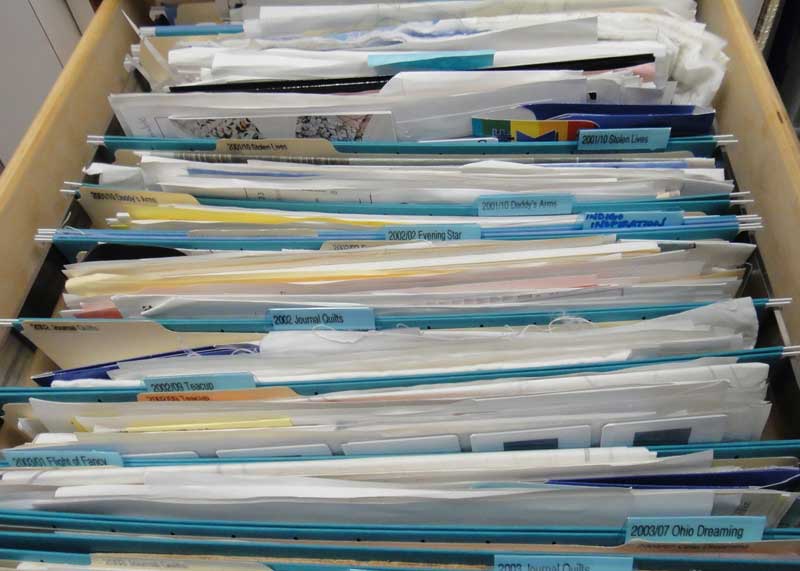
I began to realize how important it is to document quilts when one of my own quilts was lost during shipment. This led me to start the Lost Quilt Come Home website. It is a website that provides information about lost and stolen quilts. To date, there are about 1200 or more quilts posted. I’m always a little surprised and saddened when someone loses a quilt and they don’t even have a photograph of the quilt they made. Ten or more years back, I also took classes on appraising quilts. From a historical perspective, it is such a treasure when an owner has background information about their vintage and antique quilts. It often makes the quilt more valuable. Even if all you plan on doing with your quilt is handing it down to future generations, it makes your quilt so much more special when your descendants know about your quilt.
Documenting Your Quilt Tutorial
Honestly, I’m pretty lazy when it comes to this. Mostly I just have a separate file folder for each quilt. You could also use a ziplock bag or a manila envelope — anything that keeps the information separate and contained. Then anytime I come across something that relates to that specific quilt, I stuff it in the folder. Here are a few things I might put in:
- Receipts for fabric and supplies
- Sketches
- Pattern used
- Notes about why I made the quilt or what inspired me
- Fabric swatches
- Photographs, both in progress and finished
- Copies of entry forms
- Brochures from shows the quilt was in
- Ribbons won (think big!)
- Newspaper clippings
On the outside of the file folder I often jot down notes.
- Quilt name
- Pattern and size
- Start and finish dates
- Current owner, if sold or given away
- Any special materials or techniques used
- Awards
The other thing you have to decide is how you will organize the folders in your drawer. You could file them alphabetically. I chose to file mine chronologically. The main reason is that after the first couple years, I don’t usually have anything left to put in the folders. They pretty much just become an archival record that I might look at once a decade, but at least I have everything in one specific place in case I ever do need to find it.
You also need to decide what you’ll name each file. If you file alphabetically, it is logical to label each file with the name of the quilt. Since I file chronologically, I label mine with the year first, followed by the month and then the name. The label would look like this: “2010/05 Sheer Whim.”
This ends up being a pretty quick and easy way to document my quilts, plus it gives me an excuse to use my handy-dandy label maker. (Organizer types just love those things.)